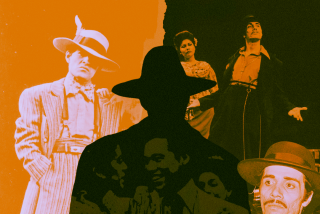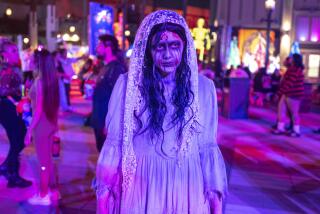The Chupacabra: An Expression of Real-World Anxiety
- Share via
Latino students in Ms. Edwards’ Southern California high school journalism class are buzzing over a story sweeping through Spanish-speaking Los Angeles as well as Miami, Mexico and Puerto Rico. A vampire-like predator, the chupacabra (goatsucker) has been reported attacking at night, mutilating and sucking dry the blood of goats, chickens, perhaps humans next.
In fear, one L.A. girl’s mother has imposed a sundown curfew and says her daughter may not attend her high school prom. Another family sleeps during the day, fearing the night. Others just check that windows are closed tightly.
Edwards wants the students to write about the story for the school paper. Although they willingly attach their names to articles about AIDS, drug use and pre- marital sex, the students refuse to go on record with their opinions and beliefs about the chupacabra.
What does it mean?
Fearful of being labeled “stupid,” the students are self-conscious about believing in this mysterious creature. Officials claim that victims have only been killed by dogs or wolves, yet many pupils and their families persist in believing that the chupacabra caused the deaths.
Most folklorists call the chupacabra an urban legend, a story that contains often preposterous as well as credible details. Folklorists believe that urban legends reveal social anxieties. Local issues about aliens, border patrol incidents, Proposition 187, and the potential demise of affirmative action worry the Latino community. Projecting fears onto a blood-sucking creature is a safe way to air concerns.
More to Read
Sign up for Essential California
The most important California stories and recommendations in your inbox every morning.
You may occasionally receive promotional content from the Los Angeles Times.










